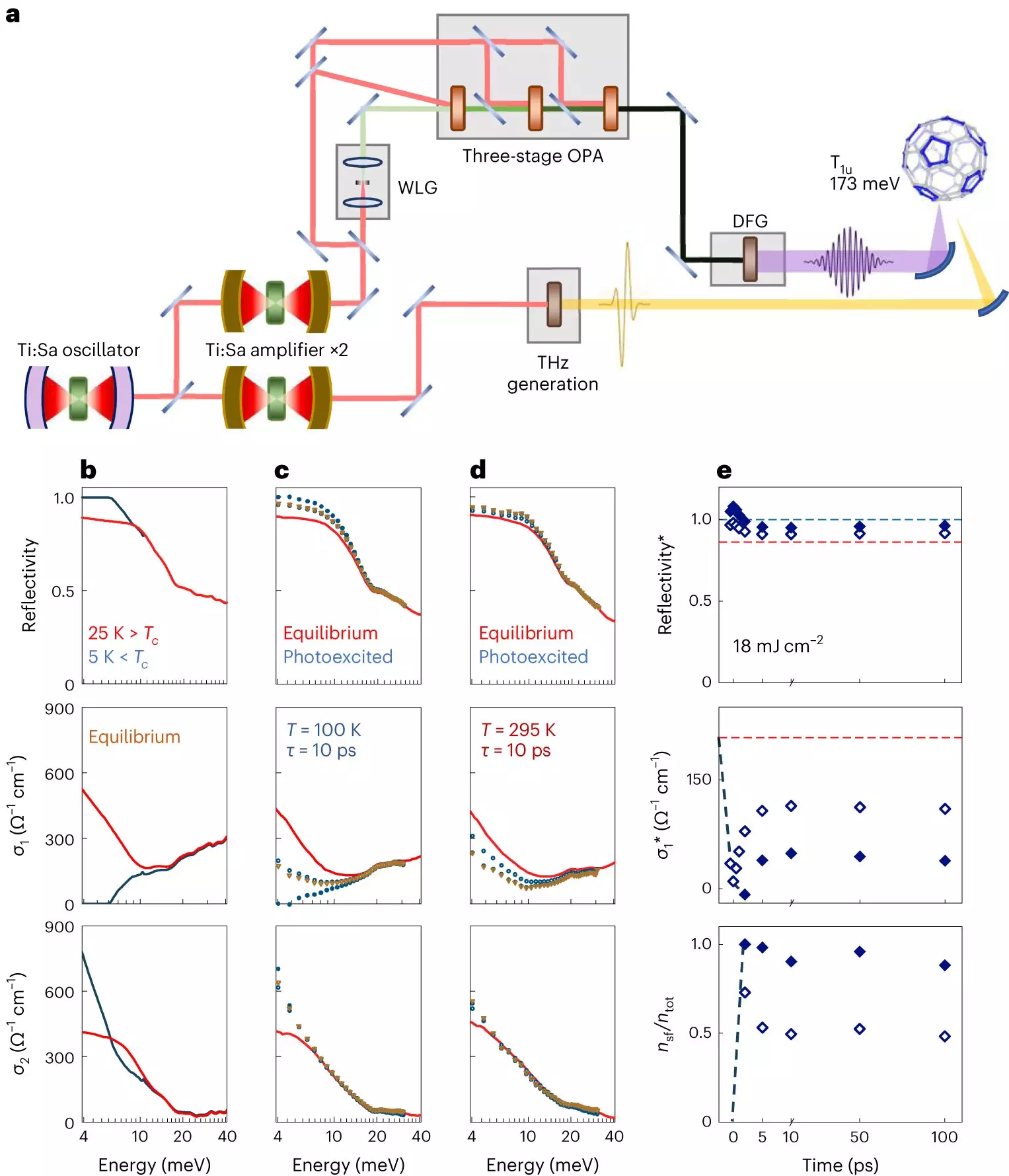Superconductivity, the ability of certain materials to conduct an electrical current with little to no resistance, has become a highly sought after property in various technological fields. This capability has the potential to significantly improve the performance of electronic and energy devices. Scientists have been actively researching methods to enhance superconductivity in specific materials, including K3C60, an organic superconductor. Recent research by the Max Planck Institute for the Structure and Dynamics of Matter, Università degli Studi di Parma, and the University of Oxford has successfully identified a strategy to enhance light-induced superconductivity in K3C60, yielding promising results. This article explores the new findings and their potential implications.
Exploring Light-Induced Superconductivity
For approximately a decade, researchers have been investigating the possibility of utilizing light to enhance superconductivity, specifically starting from an equilibrium state at a base temperature above Tc. Previous experiments have demonstrated success in certain charge transfer salts, cuprates, and K3C60. The latest study delves into the mechanism behind optically induced superconductivity in K3C60, utilizing a highly tunable optical source with a frequency of 10 THz.
In previous experiments, researchers achieved the superconducting phase of K3C60 using excitation photon energies ranging from 80 to 165 meV (20–40 THz). However, the latest study focuses on exploring excitation at lower energies between 24 and 80 meV (6–20 THz). To accomplish this, researchers employed a terahertz source capable of generating narrow-bandwidth pulses through the combination of near-infrared signal beams from two distinct phase-locked optical parametric amplitudes. This strategy offers insights into the underpinning physics, targeting specific molecular vibrations that resonate at their frequency. These vibrations appear to couple with electronic states, enhancing pairing and coherence required for superconductivity. The study highlights the effectiveness of this effect at 10 THz, where a certain molecular vibration is observed.
The recent research on light-induced superconductivity in K3C60 provides valuable insights into the mechanisms involved. Furthermore, it introduces a strategy that may extend the duration of photo-induced superconductivity, potentially paving the way for the development of light-driven quantum technologies. Notably, the researchers were able to achieve a 10 nanosecond long-lived superconducting state at room temperature, which holds promise for future quantum devices powered by light.
The ability to enhance superconductivity using light has immense implications for the advancement of various electronic and energy devices. The recent work conducted by the Max Planck Institute for the Structure and Dynamics of Matter, Università degli Studi di Parma, and the University of Oxford represents a substantial step forward in this field. By uncovering the mechanisms and exploring new strategies to enhance light-induced superconductivity in K3C60, the research team has opened up new possibilities for the future development of light-driven quantum technologies. These findings lay the foundation for further exploration and technological advancements in harnessing the potential of superconductivity.


Leave a Reply